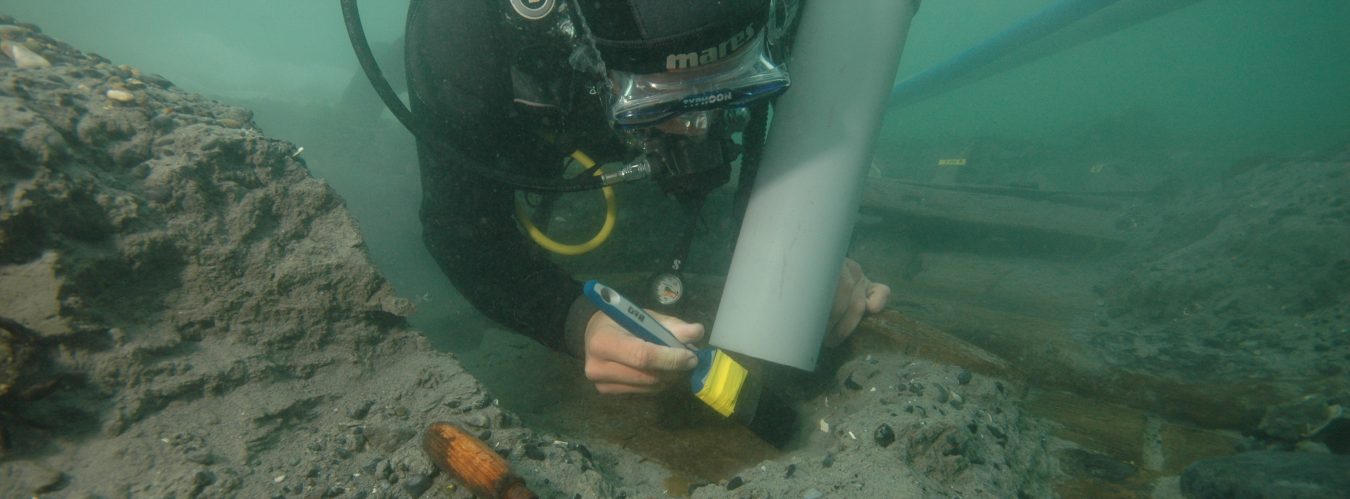I’ve been working on Reflectance Transformation Image capture in a sub-aquatic environment. On 2 May, 2013 the first ever PTM file from an RTI dataset captured entirely underwater was successfully processed in the Archaeological Computing Research Group computer lab at the University of Southampton using RTIBuilder software. Images were captured in 1.5 meters of water at the campus Jubilee pool using a common 12mpix digital camera and a 15 watt 1000 lumen HID dive-light. The object photographed was a chunk of 18th century wooden ship ‘deadeye’ rig blocking found in the Itchen River in downtown Southampton. The experiment was the first in a research design I’ve authored to assess the viability of ‘Underwater RTI’…or what I’ve dubbed ‘URTI’. Approximately 1540 photographs were taken over a 3-hour period in the pool. The light radius was controlled by a piece of string spinning freely under the object via a heavy steal cylinder, and arc positions (4-6 per section, 13 sections) were entirely free-handed. Seven independent sets of data were captured, and although only one of the sets produced acceptable results, the experiment proved the viability of RTI underwater. Further research is forthcoming to continue the viability of RTI as an underwater diagnostic tool. This summer I will be conducting baseline feasibility studies for the further development of technology and methodology in support of Reflectance Transformation Imaging in sub-aquatic environments.




